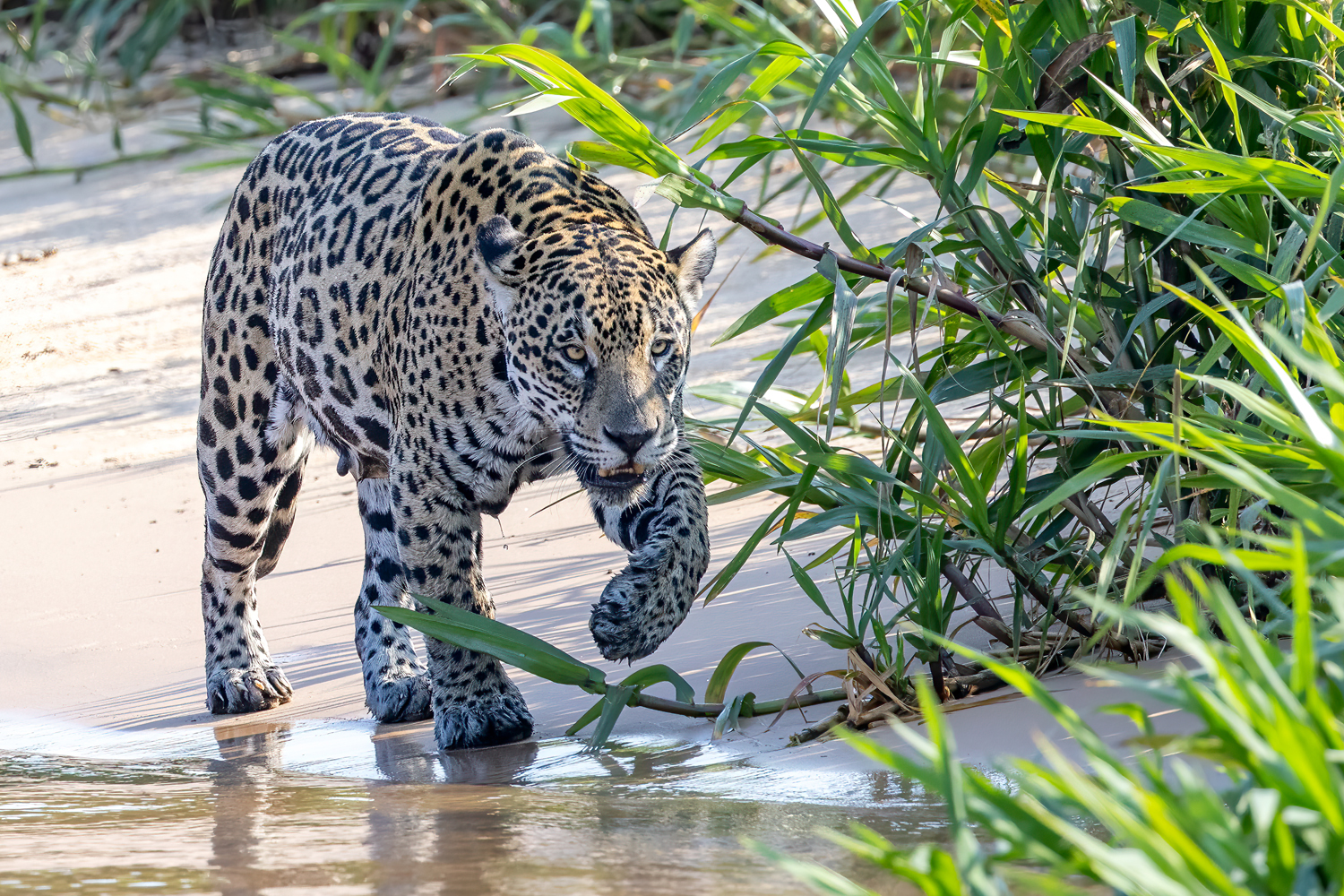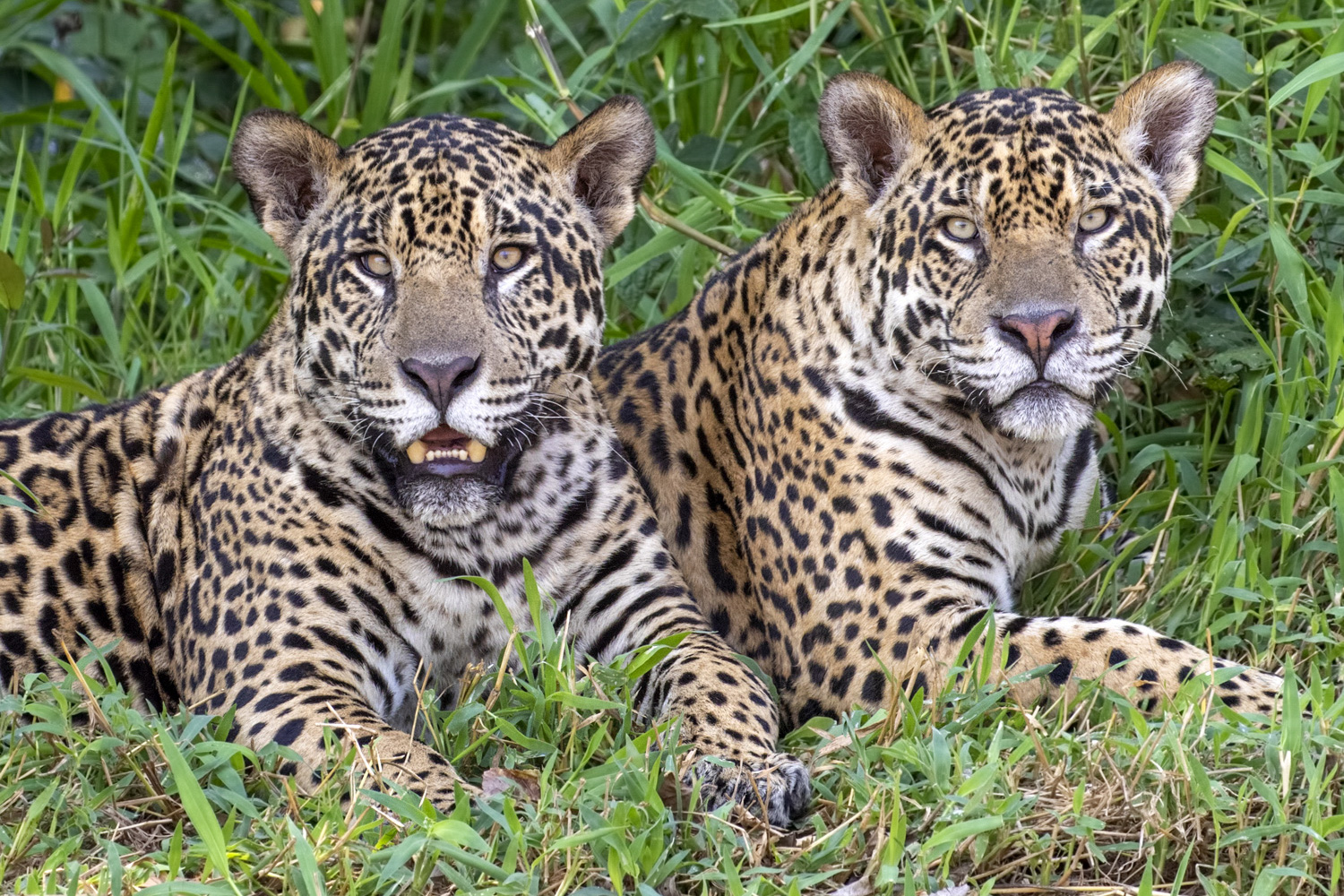If you have seen my earlier Pantanal trip reports, you know The Jaguars and Wildlife of Brazil’s Pantanal is my favorite tour to lead. Over the years, I have come to know and recognize many of the jaguars that we see regularly. I have followed some of them through multiple generations. It is always a treat to see my regulars along with several new cats each year. It’s not just the incredible jaguars that draw me to the world’s largest tropical wetland, but also families of giant river otters, capybaras, jacaré caiman and hundreds of species of birds that are within easy reach of our cameras.
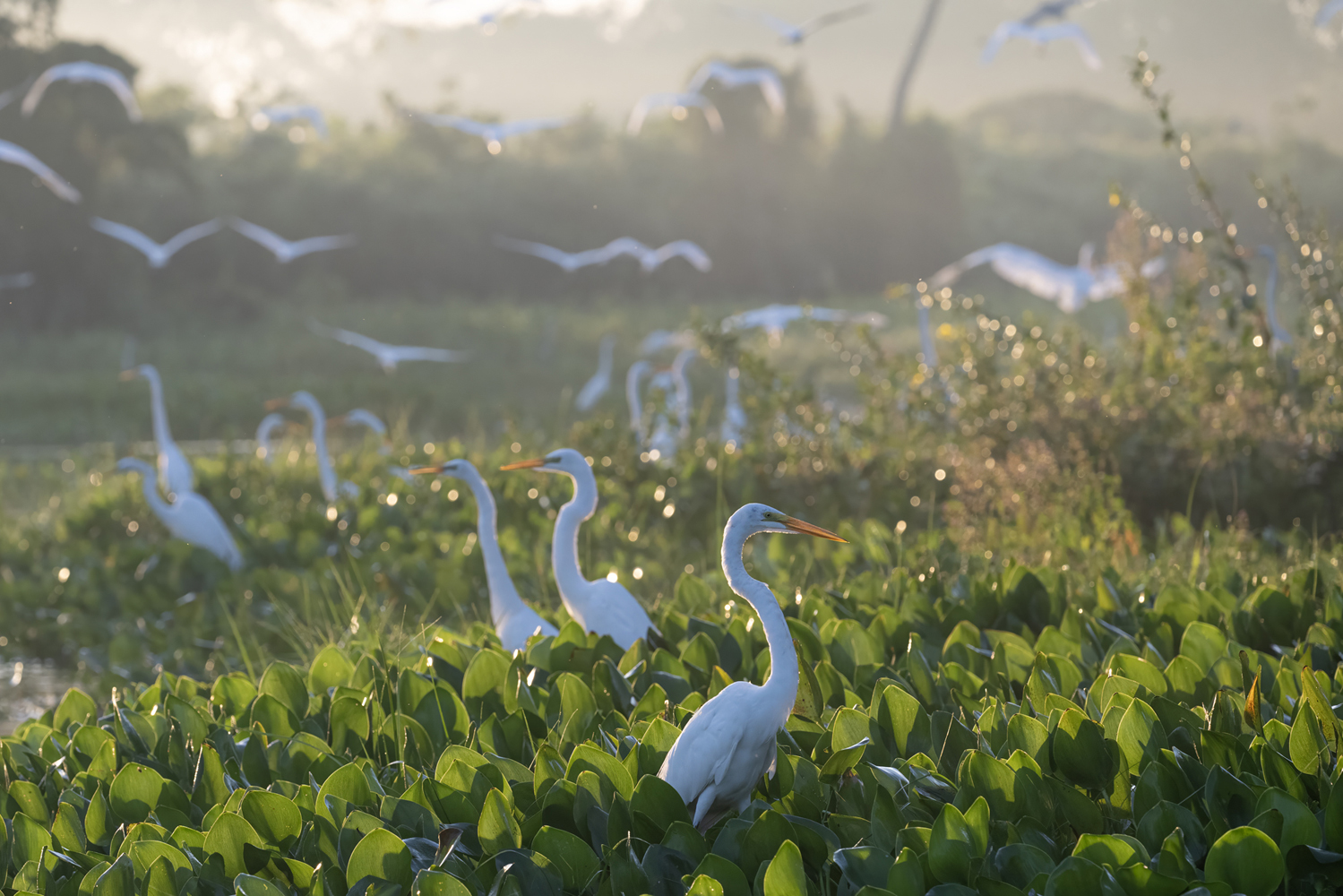
The Pantanal is a natural flood plain. It is located mostly within Brazil, but also extends into portions of Bolivia and Paraguay. It stretches over an area between 140,000 and 195,000 square kilometers. Within the Pantanal, as many as 12 subregional ecosystems exist, each with distinct hydrological, geological and ecological characteristics. The area offers us nearly unlimited photo opportunities.
This year, I led 3 tours and was in the Pantanal for 6 weeks during the heart of jaguar season. This report will encompass all three tours.
We begin in the Mato Grosso city of Cuiabá. From there, we travel by comfortable, air-conditioned bus down the Transpantaneira, a 90-mile dirt road that crosses 122 bridges on its way to our riverside lodge at Porto Jofre. Along the way, we stop frequently to photograph a variety of birds such as great egrets, jabiru and wood storks, spoonbills and other wading birds. Other subjects along the way include hundreds of jacaré caiman (the South American version of an alligator), herds of capybaras (the world’s largest rodent) and the occasional yellow anaconda crossing the road. Rufescent tiger herons, snowy egrets, wattled jacana and other smaller water birds strut in front of our cameras in the wet areas that flank the road.

There are 5 species of kingfisher in the Pantanal. We usually photograph at least 3 of them along the road and out on the river. Unlike the belted kingfisher found in the United States, the kingfishers found in the Pantanal are infinitely more approachable, making for easy photography. During our two-day drive down the Transpantaneira, we sometimes come across local cowboys, called Pantaneiros, driving their cattle down into the Pantanal to graze during the dry season. Come the rainy season, beginning in October, they will round up their herds and drive them north to higher ground outside the flood plain.
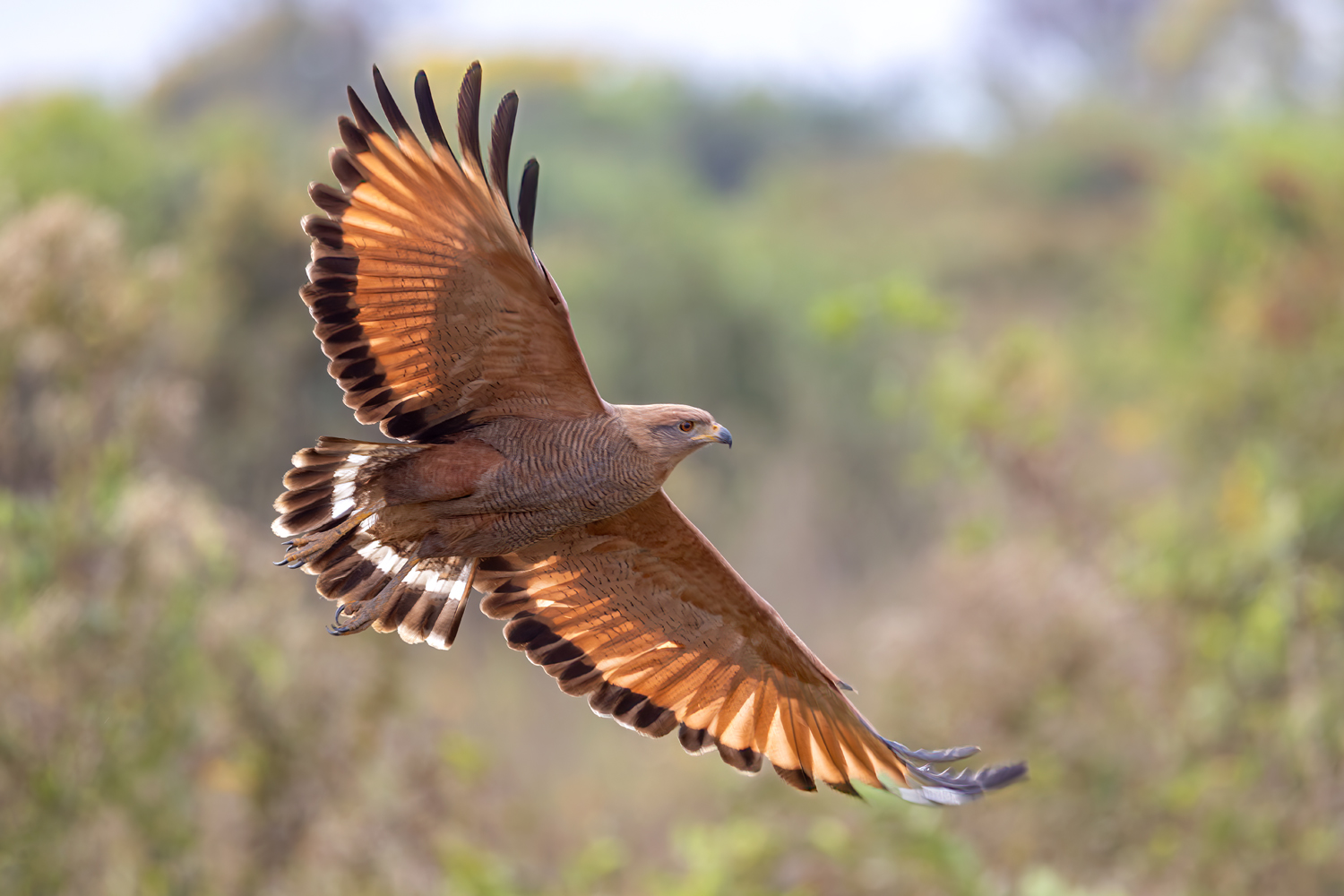
We arrive at the first lodge of the trip around lunchtime. This lodge is nestled along the shore of a large, winding oxbow lake where, shortly after lunch, we get our first opportunity to take photographs from boats. Jaguars are still two days away. For now, we hone our bird-in-flight photography skills as great black hawks, black-collared hawks, cocoi herons and ringed kingfishers compete for the fish our boatmen toss out to them. We arrive back at the dock just in time to capture an active jabiru stork nest silhouetted against a magnificent orange sunset over the Pantanal. After our first outing, we review our images from the day to see what worked and what adjustments need to be made. The next day, we are out on the boats in the morning and again in the afternoon. After these three boat trips, even folks who never photograph birds in flight are very pleased with the images they’ve captured.
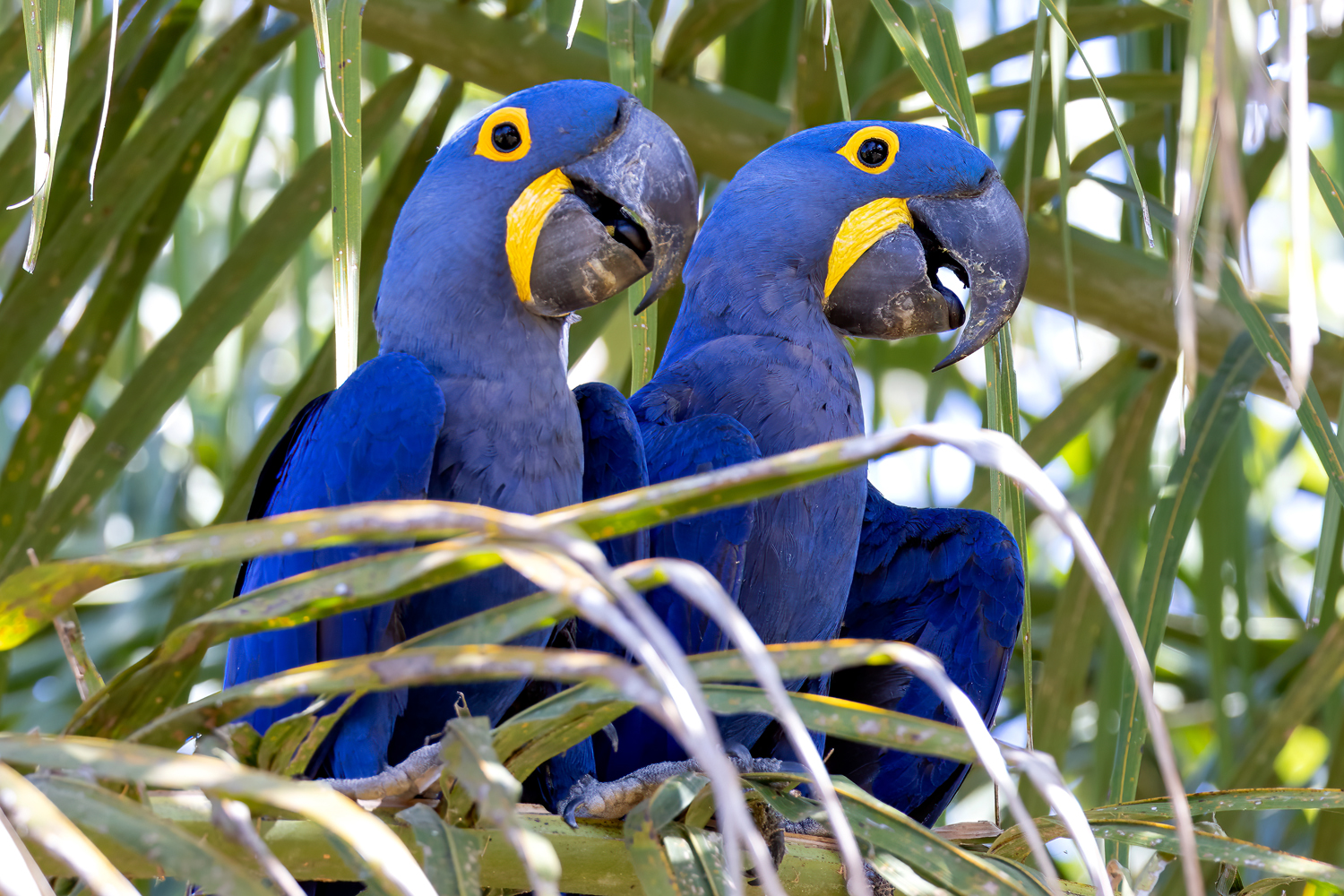
After breakfast on day 3, we continue traveling south on the Transpantaneira deeper into the Pantanal. Our “jaguar” lodge lies at the end of the road, literally. Our rooms all overlook the Cuiaba River, where the next morning we begin our adventures into jaguar country. After settling into our spacious accommodations, a great lunch awaits us in the large, air-conditioned dining room. This first afternoon is our opportunity to photograph the unique scenery and wildlife found on the lodge property itself. There is an inland lagoon alive with giant Victoria water lilies, whose pads easily span more than a meter across. Rufescent tiger herons, striated herons and wattled jacanas use these lily pads to hunt for fish and other aquatic creatures. Kingfishers and kiskadees launch from the wooden boardwalk’s railing in search of fish and insects. This year, a pair of southern screamers with 4 chicks and black-bellied whistling ducks with babies were easily photographed along the edge of the lagoon. One of the most iconic birds to photograph here is very vocal and more often heard long before it is seen. So, we always keep an ear to the sky while exploring the property. I am talking about the world’s largest parrot, the hyacinth macaw. These large, brilliant blue birds feed on the nuts of two different palm trees found on the property and typically show up before dusk. They take turns climbing down to the seed clusters which usually puts them at eye level just 20 feet away. A flock of nine macaws gave us ample opportunities to photograph them and they even roosted overnight in the palm trees outside our rooms.
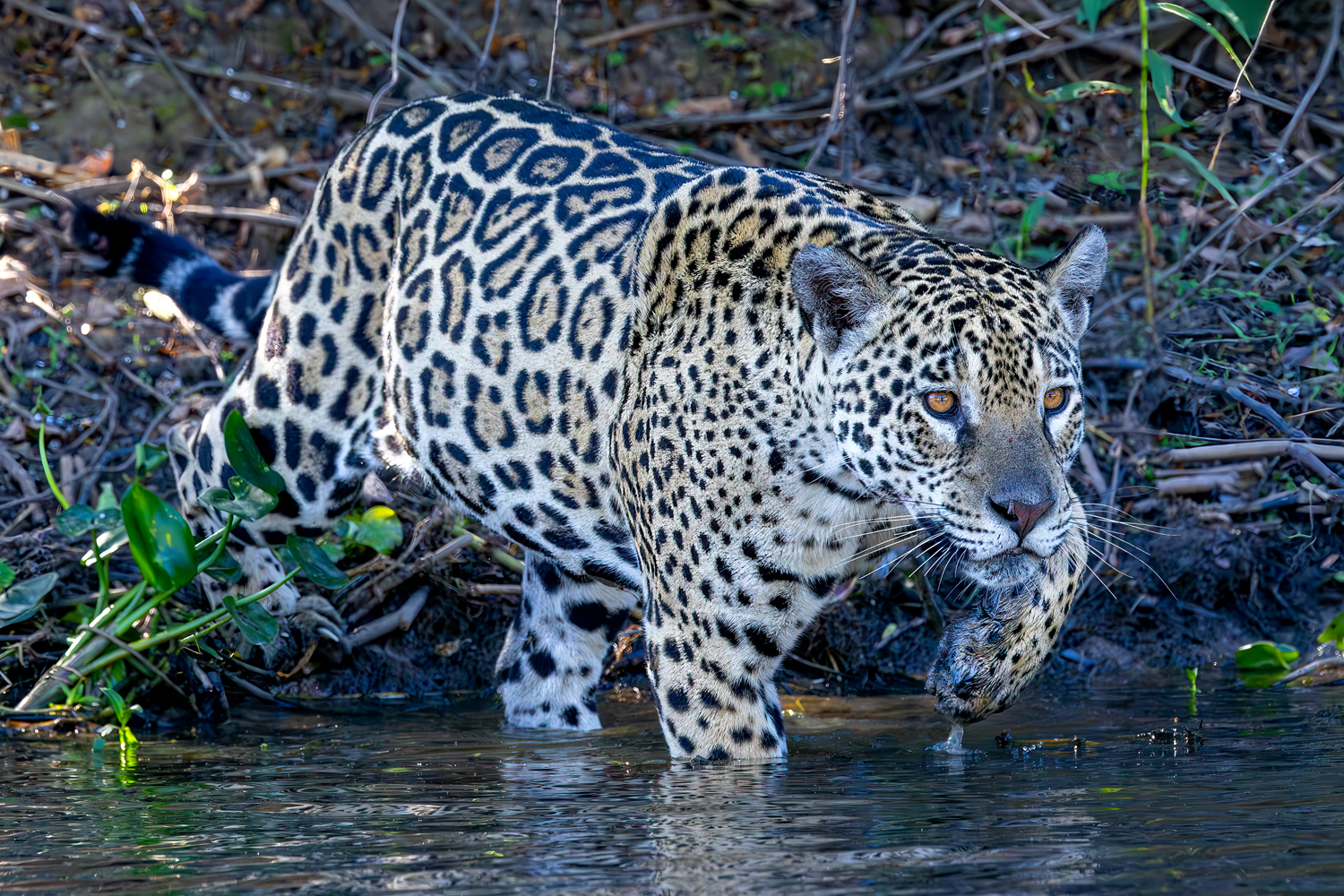
The dining room at this lodge sports a large table covered with salad items and dressings. Plenty of hot food is available, buffet style. There is always freshly caught and cooked fish, chicken, and beef as well as rice, beans and pasta. After dinner, Paulo, our local guide, and I lay out the plans for the exciting days ahead. We then take a short ride to a neighboring property run by Panthera. Panthera studies big cats around the world. One of the projects they support is the Jaguar Identification Project. We listen to Abigail Martin tell us everything we need to know about the jaguars we are about to meet and the Pantanal in general. It is an extremely informative talk. We also can pick up a copy of the latest Jaguar Identification Guide which has pictures and the family history of many of the jaguars we are likely to see during our adventures on the river.
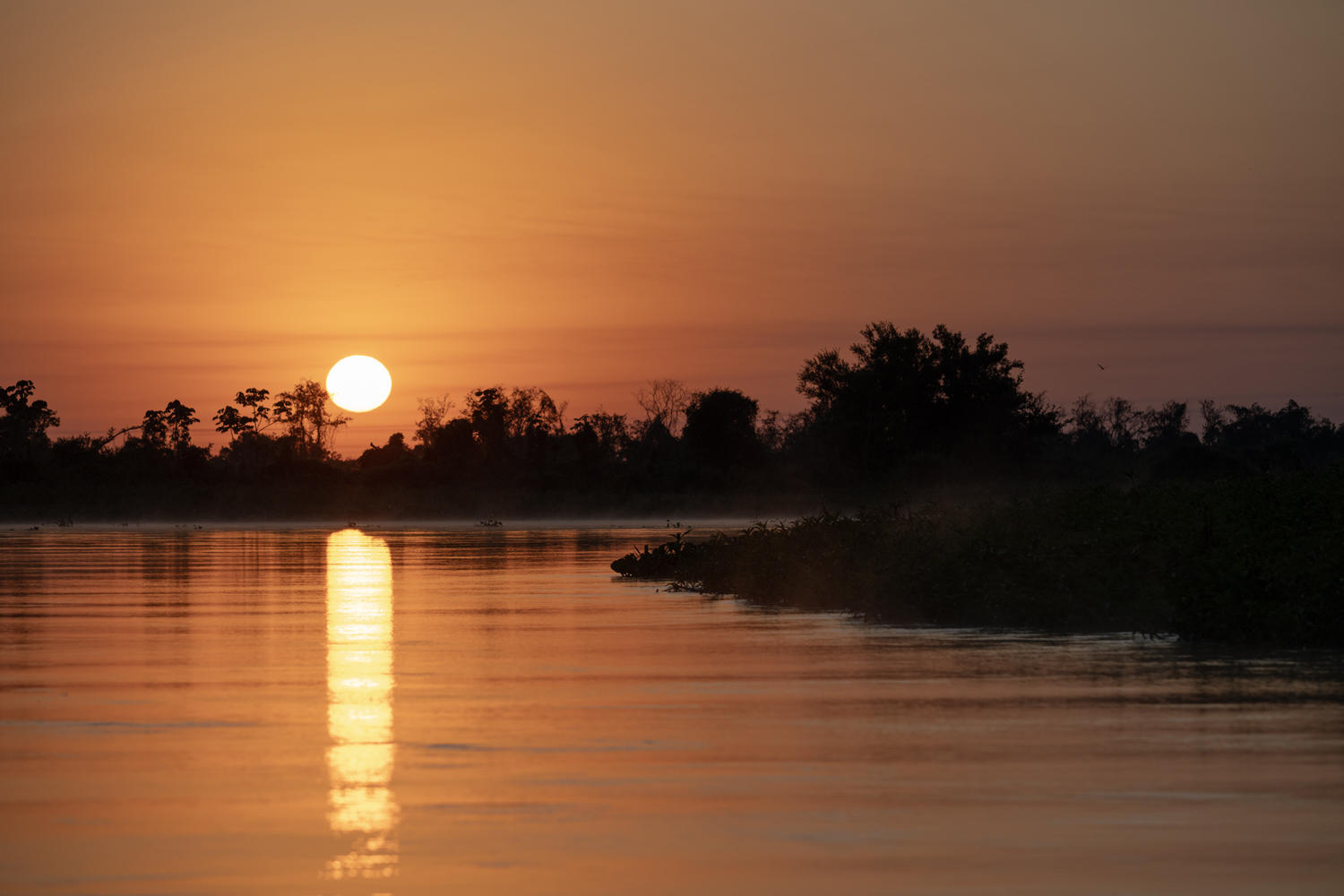
Breakfast starts at 5AM in jaguar country and everyone excitedly meets at the boats at 5:45AM. There is plenty of room for gear as we only have 3 photographers on each boat. It is still dark as we pull away from the dock. Our departure is timed so that we are in prime jaguar territory as the sun begins to lift over the horizon. As the sky begins to lighten, hundreds of snail kites fly from the south side of the Cuiaba River where they roosted for the night to the north side where they will feed throughout the day. You truly never know what you will see and when. Every boat trip on the river is unique. And each boat will see different things. All boats from our lodge are in radio contact with each other. When one boat finds a jaguar, the other boats are immediately notified. Depending on how far away a boat is from where the jaguar is sighted dictates whether a run to the jaguar is justified.
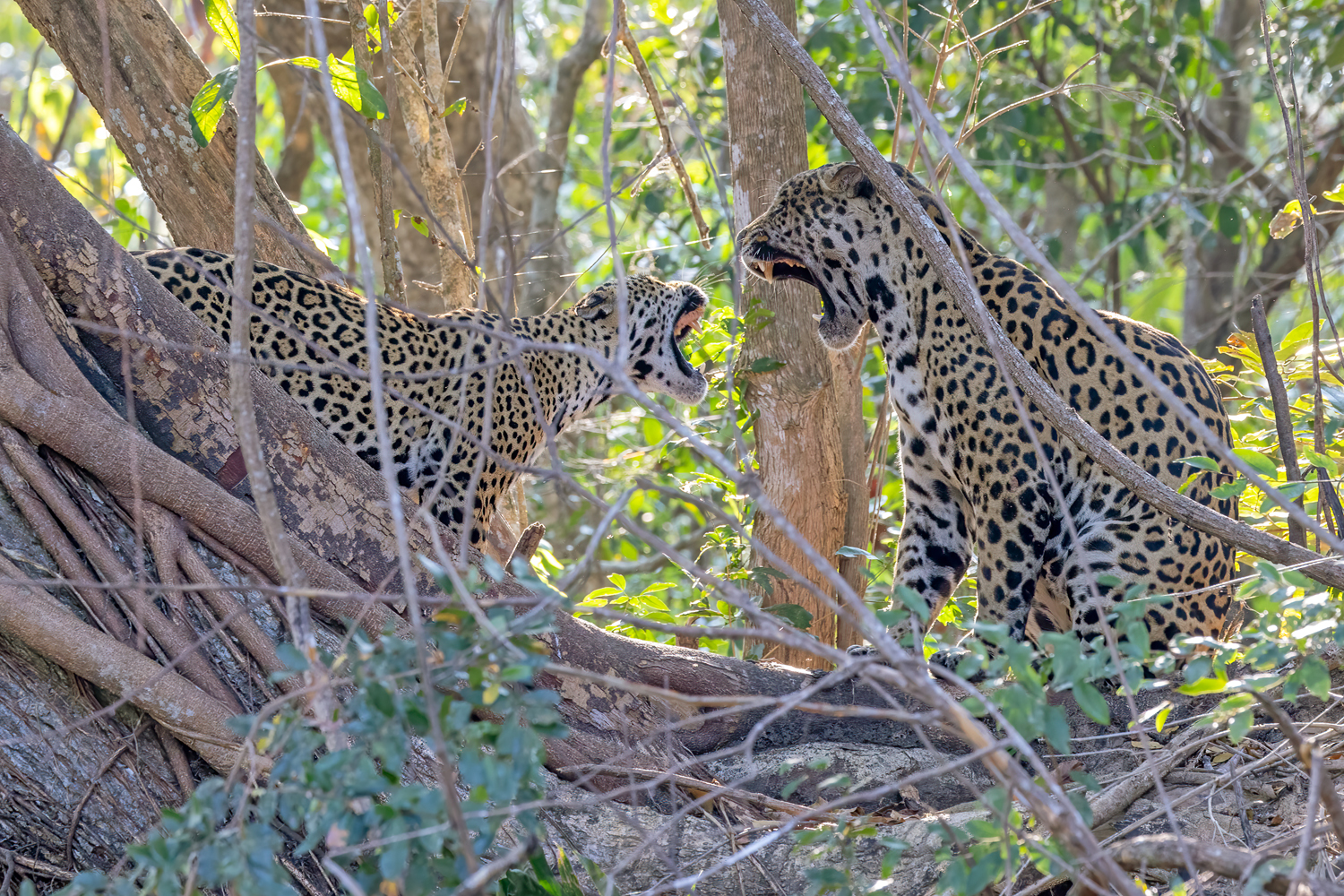
Being the third largest cat on the planet and by far the largest cat in the Americas, jaguars are always the main attraction here. And they do not disappoint. Out of the 30 times I was out on the river this season, there was only one boat trip where we did not see a jaguar. But we were concentrating on a family of giant river otters, so we weren’t even looking for jaguars on that trip. A variety of jaguar activity was witnessed and photographed this year including, mating, hunting, jaguars up trees and several sightings of jaguars catching caiman. Many female jaguars have cubs. But they were still too young to be brought out into the open very often. Young jaguars usually stay with their mothers for 2 years. So, I expect to see lots of older cubs during our 2024 Pantanal tours.
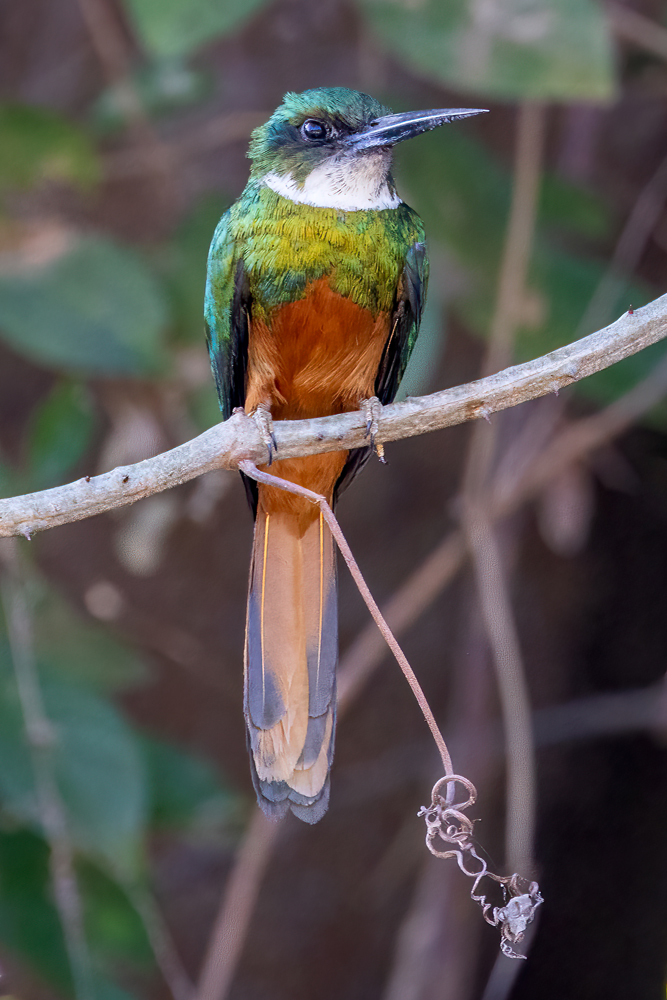
Along with jaguars, the Pantanal offers so much more to see and photograph during our river excursions. Anhingas and cormorants are constantly fishing in some of the calmer areas we visit, and with practice. It becomes easy to capture them flipping fish into the air to line them up headfirst for easier swallowing. The brightly colored rufous-tailed jacamar, a small flycatcher resembling a hummingbird, is easily photographed as it flits out to catch insects and return to the same perch over and over. Cocoi heron, black-collared hawks, black-crowned night herons, rufescent tiger herons, boat-billed herons, great egrets and dozens of other birds are ubiquitous and easily photographed every day.
On occasion, a tapir is spotted in the early morning hours on the river. More frequently, capybara families and jacaré caiman, basking on the sandbars with jaws agape make wonderful subjects as they are easily approached. Black howler monkeys are seen climbing high in the trees and even the occasional yellow anaconda is spotted along the shore tucked discreetly inside small caves or floating vegetation.
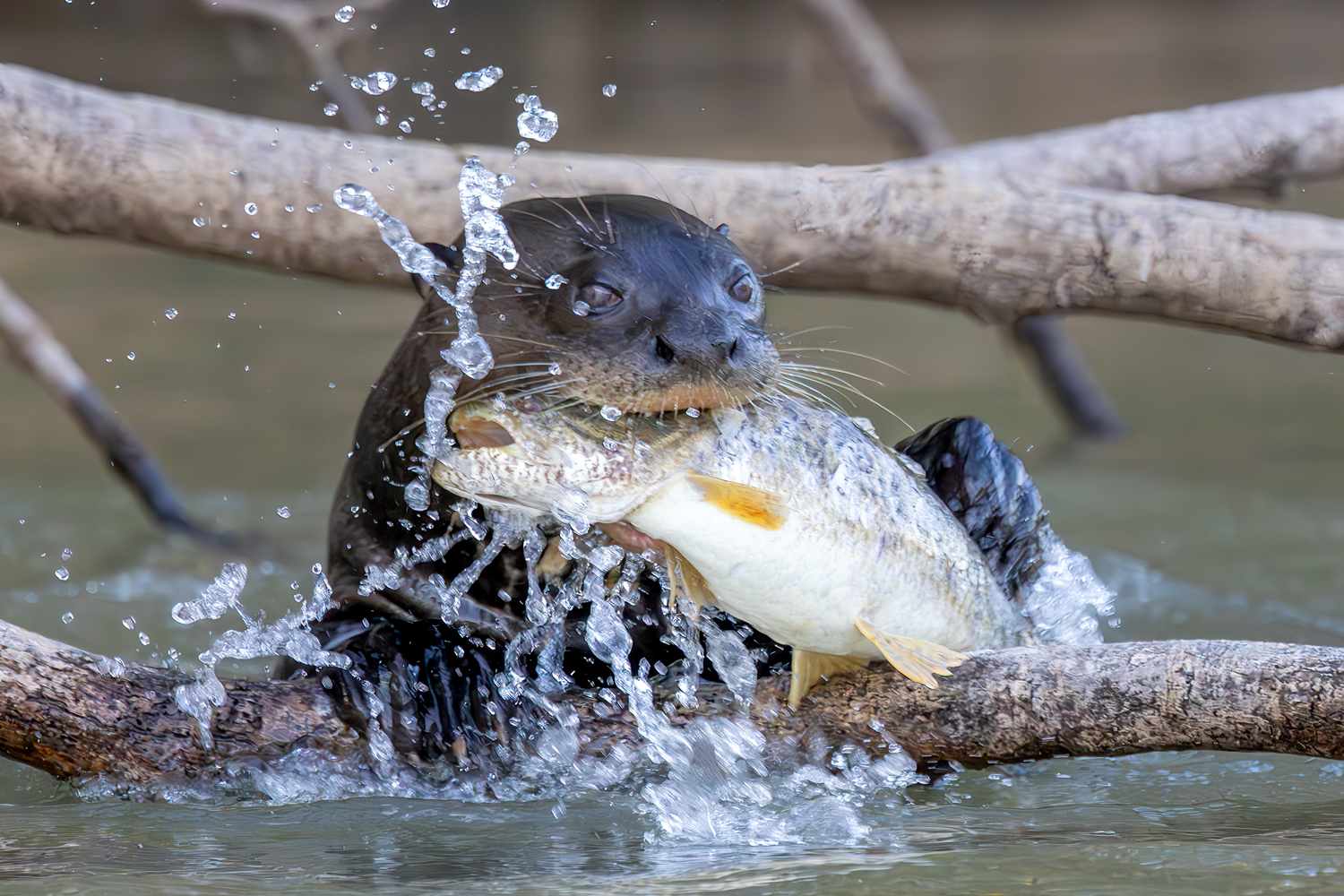
Our search for jaguars is frequently interrupted by one of the 3 families of giant river otters sharing the rivers and tributaries. Giant river otters are about 6 feet long and eat about 20% of their body weight in fish each day. It is a real treat to watch and photograph these prolific fish-catching machines in action. These lithe creatures are some of my favorites to observe and photograph in the Pantanal. This year, the largest otter family had 4 very young babies that would make their appearance in the early morning and late afternoon where they seemed to be receiving swimming lessons from their older siblings and mother. Occasionally, the otters will haul themselves out onto a fallen log to rest and dry out. But most of the time you find them in the water.
When you least expect it, a call comes over the radio. My driver, Marcelo, looks at me and says, “jaguar, Corixo Negro.” I know we are very close to this jaguar, so I make sure everyone is seated and has their gear stowed safely. I nod to Marcelo, and we are on our way. We have some of the fastest boats on the river, and the excitement builds as we navigate the once gently meandering river. At nearly 40 mph, the river takes on an entirely different look and the gentle oxbows are now a series of quick, tight turns. Our boat drivers have an incredible sense of the river. They know every twist and turn. And more importantly, they know where every submerged tree is.
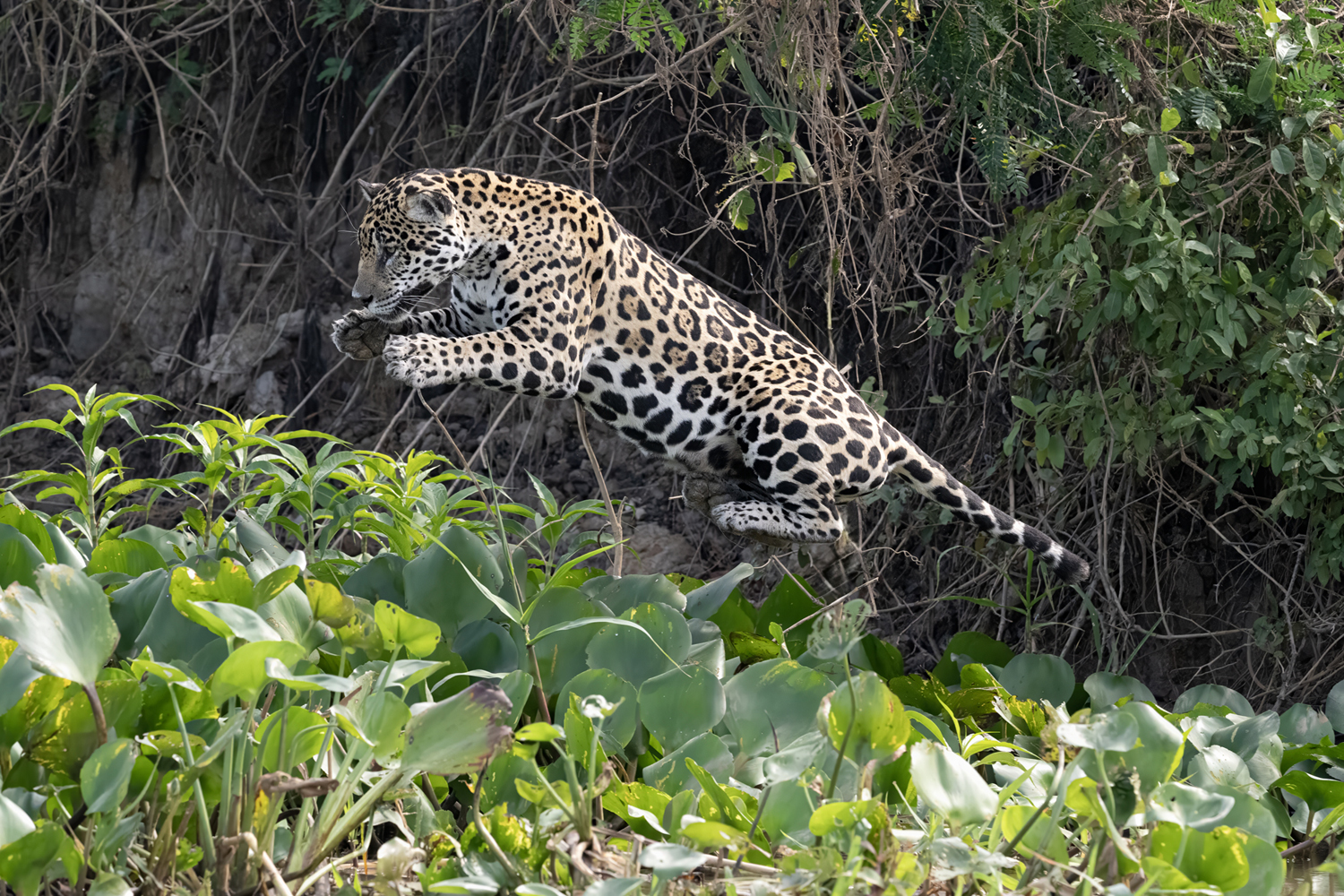
As we get closer, Marcelo points up into a tree. Medrosa, one of the jaguars I have known for at least 7 years, is slowly and deliberately making her way up a favorite tree overlooking the river. It is obvious from her mannerisms that she isn’t climbing the tree for a rest. Her eyes are laser focused on a caiman in the river below. This shows the importance of being able to identify individual jaguars. Medrosa loves to hunt from the trees. Watching her slowly move out on the branch with extremely deliberate steps was like watching an African lion or even a house cat stalk its prey. Medrosa would lift one leg ever so slowly while her gaze never moved from the caiman she saw below. Over the course of 20 minutes, she moved barely 10 feet. Our drivers put our boats in the best locations to watch and photograph the action. You could feel the tension building as she got closer to the end of the branch. She planted her hind feet deliberately and then leaped into the water from at least 20 feet away. It was a miss this time. But with two young cubs to feed, she would not give up. Later in the day, we got word that she was successful in capturing a large caiman.
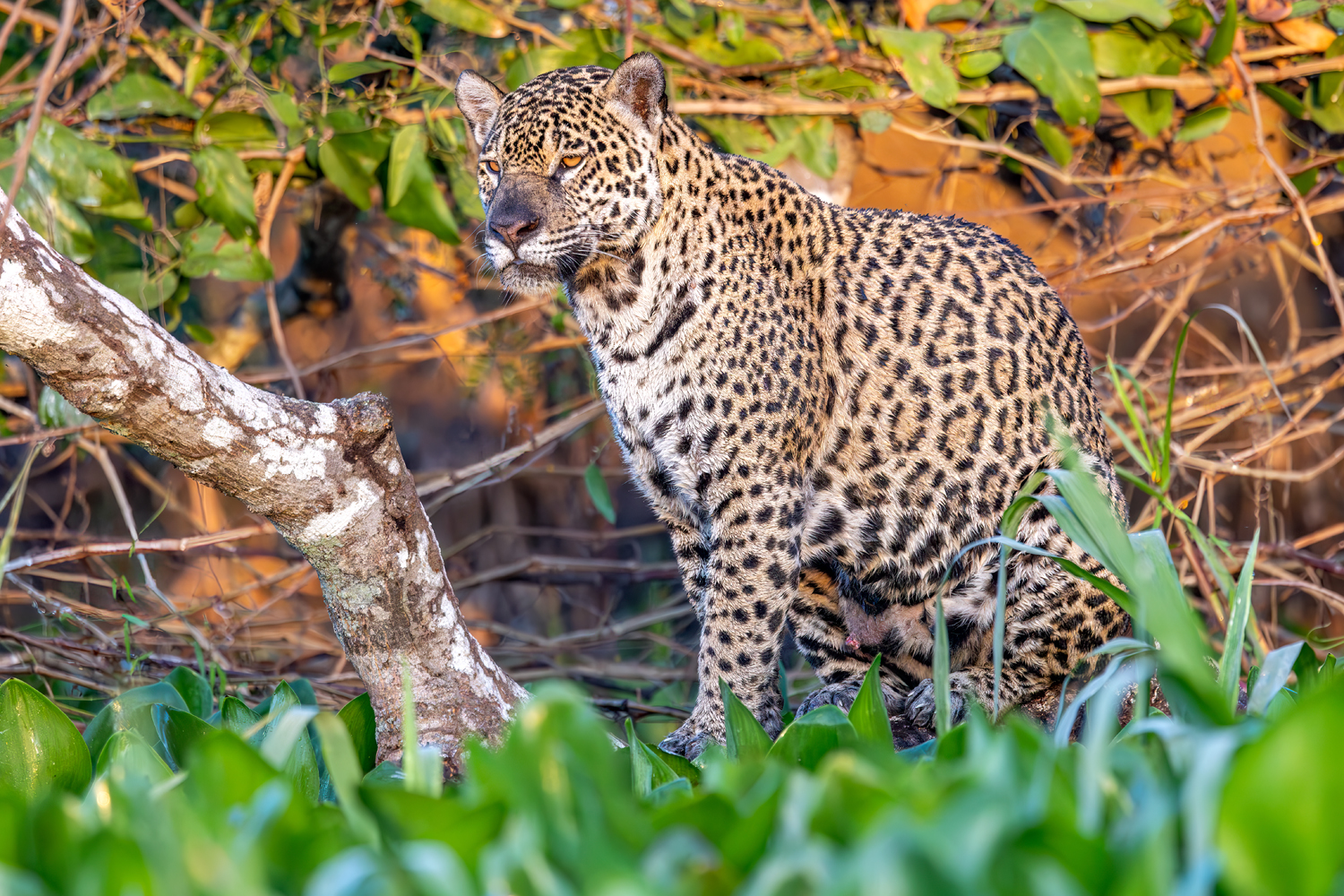
Our boat drivers are really the best there are. They have watched these jaguars almost every day, year after year. Jaguars are creatures of habit. Our drivers know where each jaguar is likely to show itself next. So, while many boats will follow a jaguar walking along the shore, our drivers know to keep us ahead of the jaguar as much as possible. They also know which cats are likely to walk out onto a log or climb a particular tree. This gives us the greatest opportunities to capture the very best photographs.
Our morning boat trips usually last between 5 and 6 hours. The time flies by. Before you know it, we are headed back to the lodge for lunch. We usually have a bit more than 2 hours between the morning and afternoon boat trips. Enough time to download images, change batteries and have a nice lunch before reapplying sunscreen and heading back to the dock. We will be back on our boats by 2pm and will stay out until dusk. For the next 4 days, this is our routine.
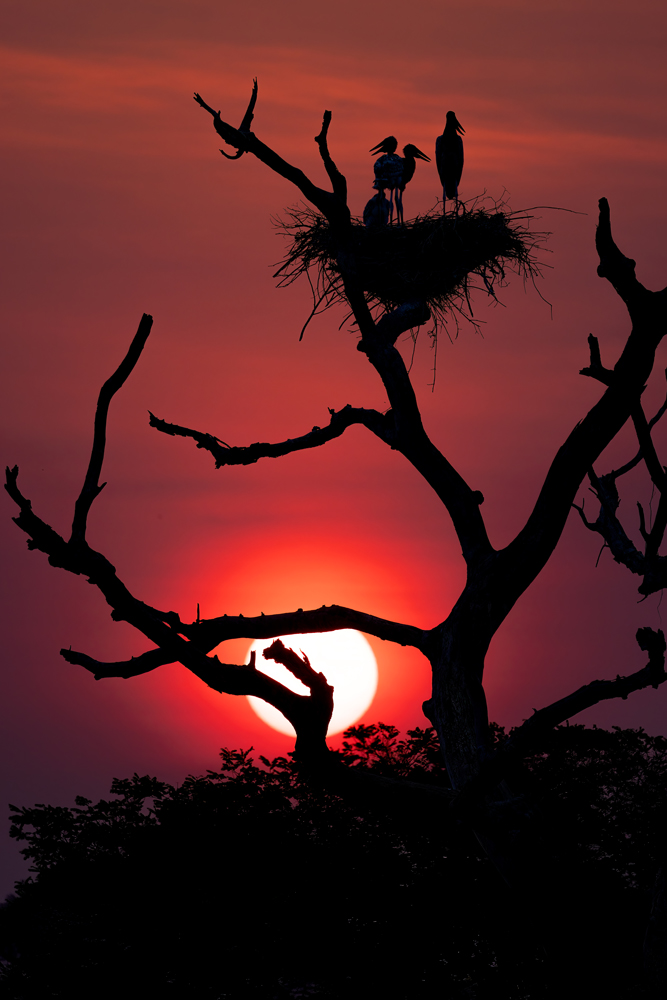
After 5 exciting days on the river in jaguar country, we say ‘good-bye’ to Porto Jofre. Our time with the jaguars has come to an end. But our time taking pictures has not. There is one final lodge to come. We leave Porto Jofre early, so we’ll have the ability to photograph the sunrise along the way. We spend the morning stopping at various locations to photograph a jabiru stork nest, feeding roseate spoonbills and sometimes we are lucky enough to come across more hyacinth macaws.
Our final lodge is the most rustic of the three we visit. It is on a family-owned cattle ranch. The property is dotted with waterholes of various sizes. The larger ones are home to hundreds of caiman and dozens of species of birds. There are no boat trips at this lodge. We make daily excursions to various waterholes to photograph whatever we find. Paulo uses his bird knowledge and bird calls to attract many small birds to nearby bushes. Yellow-billed cardinals, chotoy spinetails, red-crested cardinals, great thornbirds and antbirds are among the birds drawn in to be photographed. This year, we are lucky to arrive at the same time the magnificent pink Ipé trees are in full bloom. With a bit of patience, we were able to photograph the vividly colored orange-backed troupial surrounded by bright pink flowers. A yellow-rumped cacique also flitted about the branches in search of nectar from the pink blooms. The Ipé trees only bloom for about 1 week during the dry season. And when they bloom, virtually ALL of them bloom simultaneously. There is no way to predict when the bloom will occur. But when you catch it just right, it is spectacular.
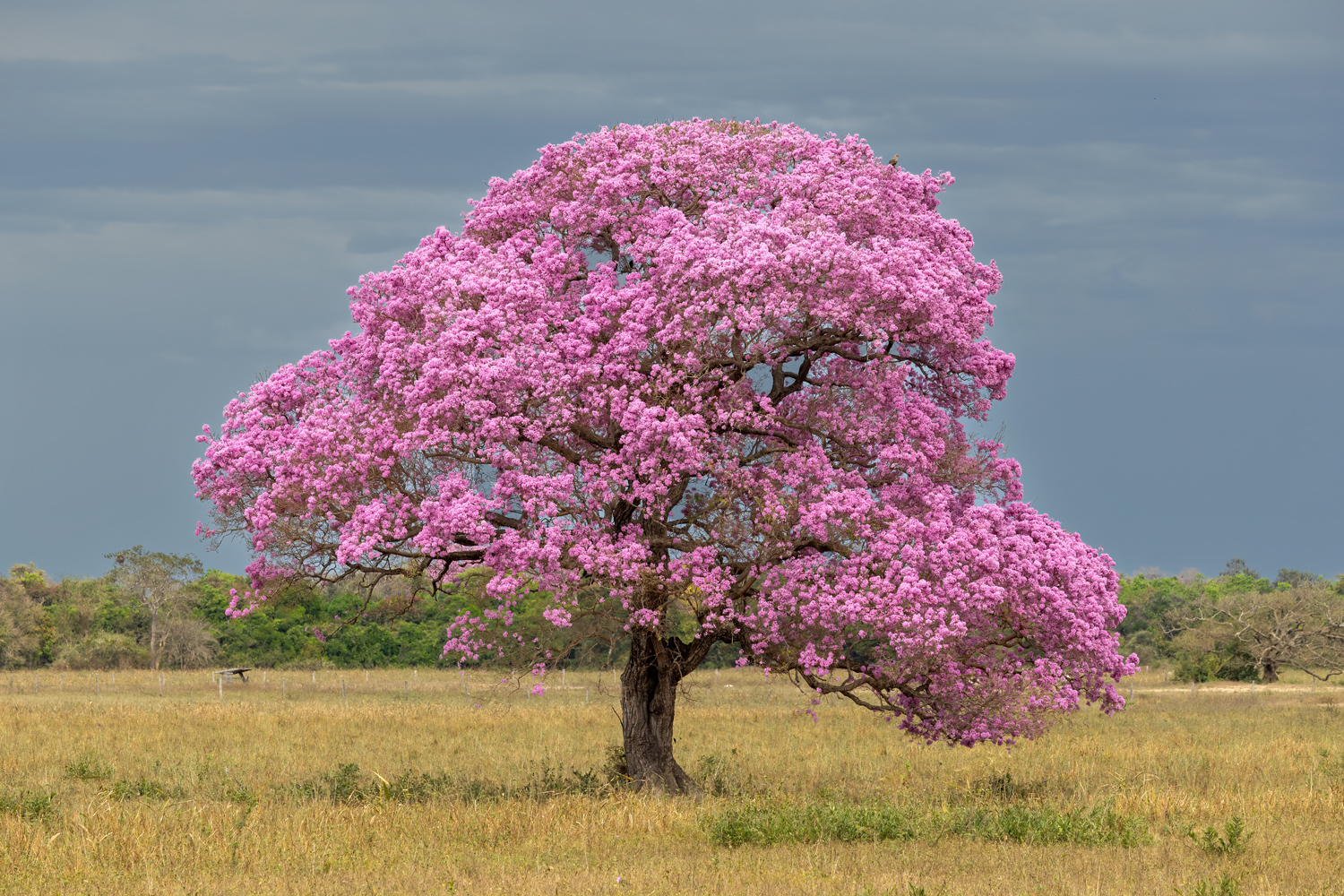
Unusually cloudy skies greet us the next morning. We start the morning photographing birds at our fruit feeder. The iconic toco toucan, with its white throat and iridescent blue eye ring, shares the feeder with chestnut-eared araçaris, great kiskadees and crested oropendolas, while the ground beneath the feeder has a family of bare-faced curassows, dozens of yellow-billed cardinals and 3 species of dove feeding on rice. A family of about 20 coatimundis, a raccoon-like mammal, also visit the feeders to eat the papaya we place there.
The action at the feeder slows after about 30 minutes so we break for breakfast. The sky darkens even more while we eat, and a light rain begins drizzling from the sky. This is very unusual at this time of year. But it doesn’t dampen our enthusiasm to head back out to the main waterhole only about 5 minutes away. As we depart the bus, the early morning sun breaks through the clouds to the east. A magnificent full rainbow quickly materializes in the sky to the west in the perfect location to frame it several ways against the flowering pink Ipé trees.
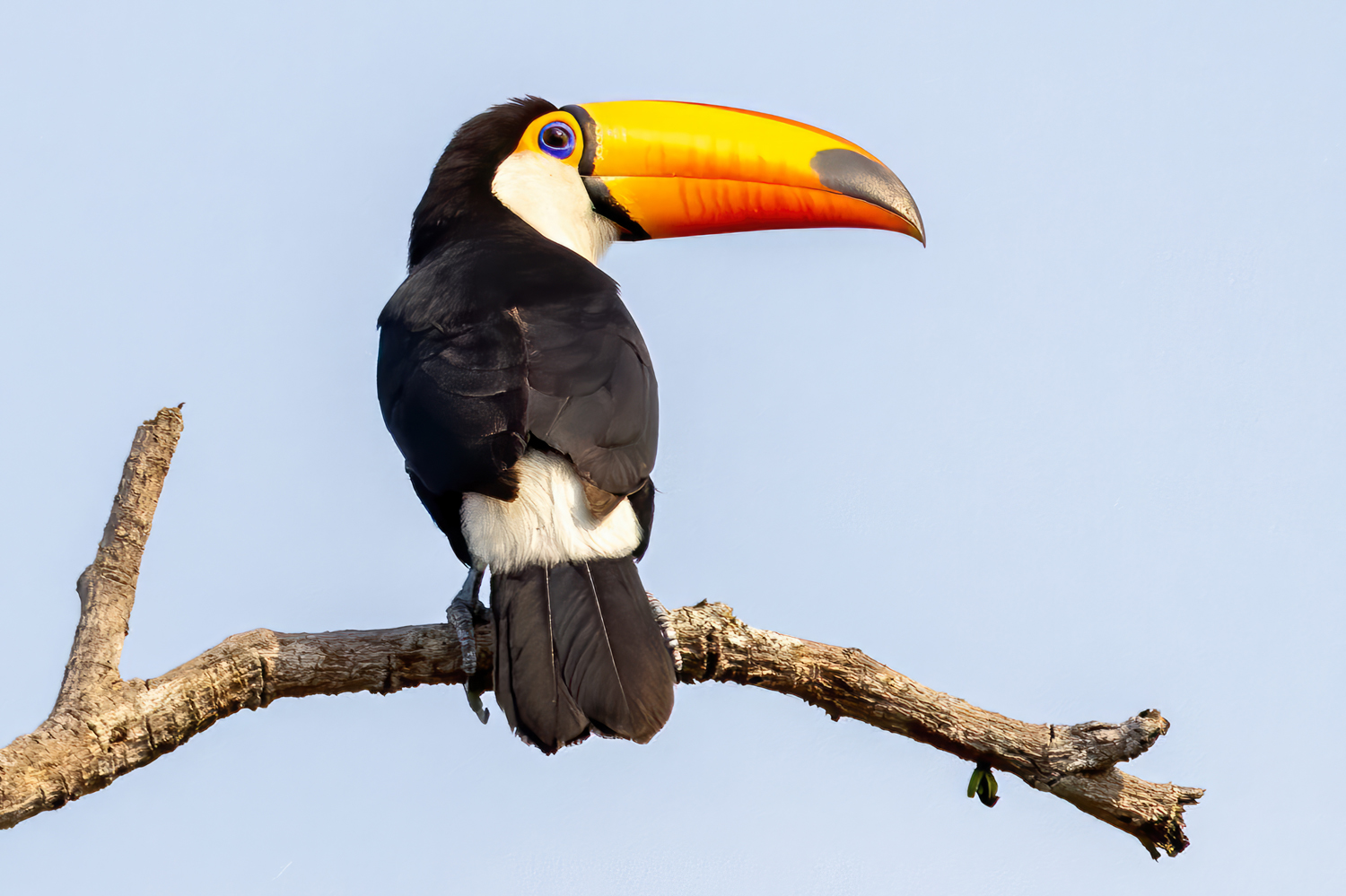
Our final morning gives us one more chance at the fruit feeder to capture any birds that we may have missed. After breakfast, we board the bus for our final drive back to Cuiaba. Along the way we stop at a very nice gift shop for those wishing to pick up some remembrances of the trip. We arrive in Cuiaba for lunch at an excellent traditional Brazilian restaurant. It is a fantastic finish for another incredible trip to the Pantanal.
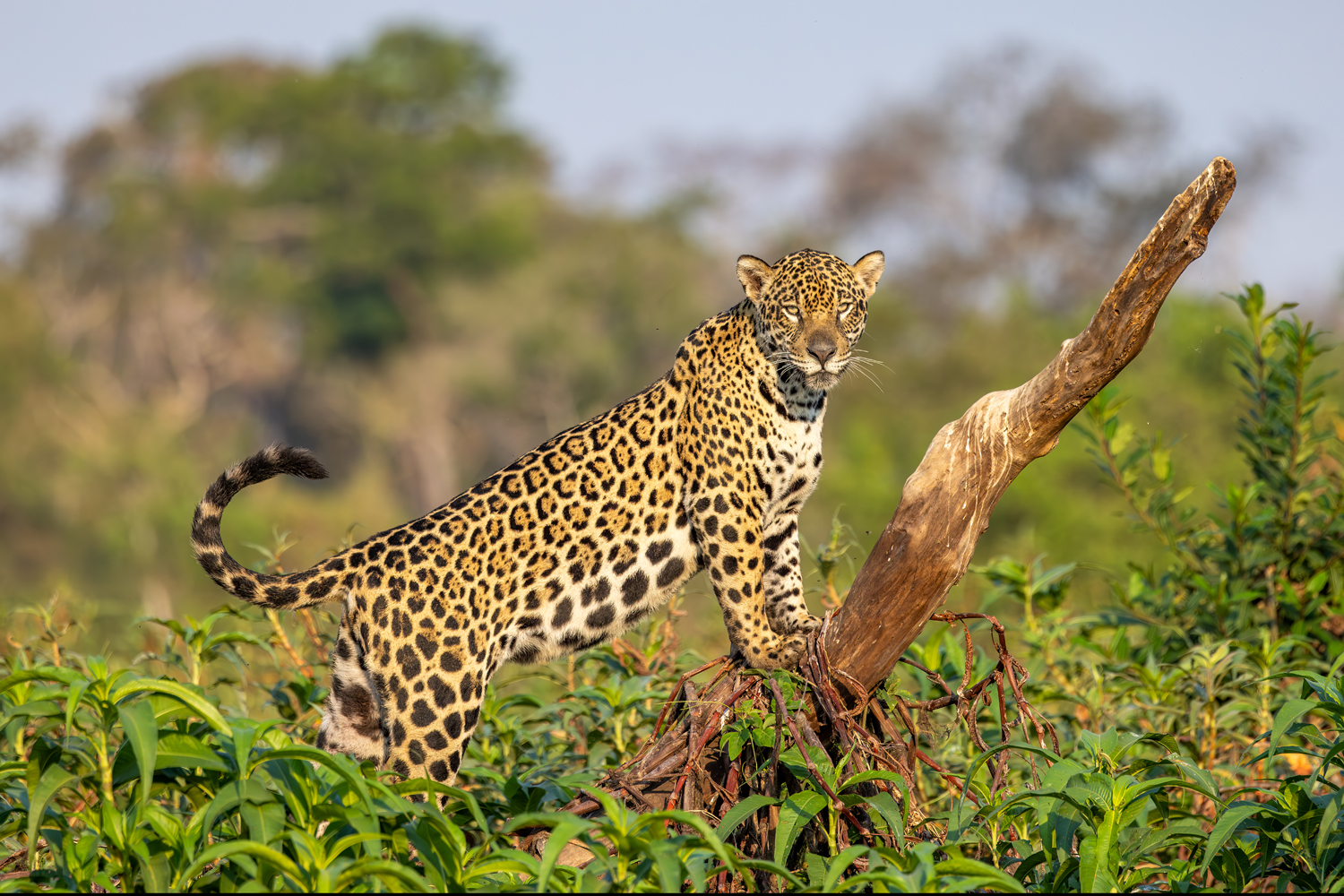
The Jaguars and Wildlife of Brazil’s Pantanal tour continues to get better and better each year. The jaguars, giant river otters and many birds have become so accustomed to the boats that they just consider them part of the environment. They go about all aspects of their lives like hunting, mating and raising their young without any concern for the big boxes floating on the river. This has created a truly unique opportunity to photograph these animals behaving naturally from close distances. I expect the 2024 jaguar season will be the best yet as the very young cubs that at least 3 of our often-seen females have this year will be grown and still hanging out with their mothers. This will likely create unequalled photo opportunities. As much as I hated for this year’s tours to end, I am extremely excited for the possibilities of 2024. If this tour his on your radar, don’t hesitate.


